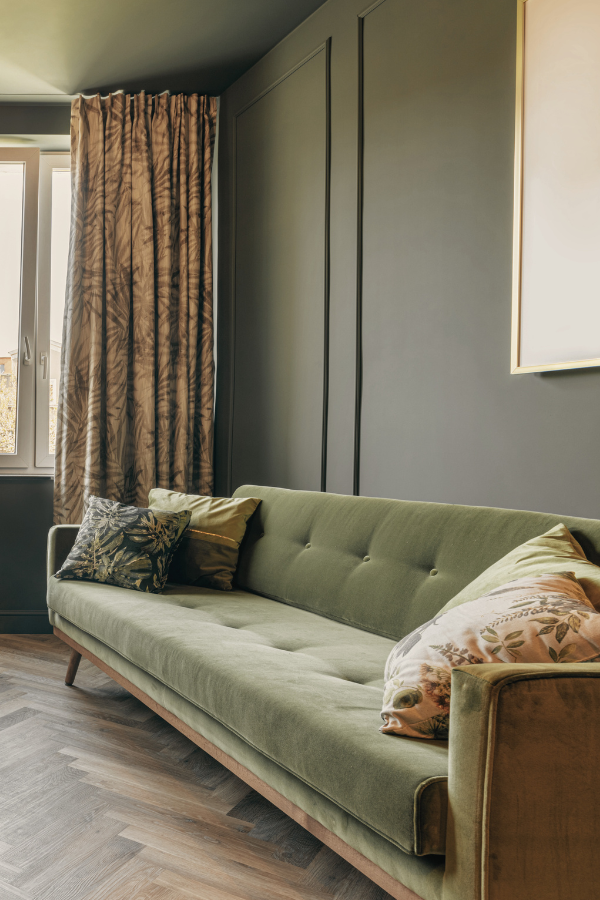

Funky, Fun, & Futuristic: The Return of 70s Interior Design
Summary
Reflection Questions
Journal Prompt
Interest in 1970s design trends spiked during the COVID-19 pandemic as we placed even greater importance on our home interiors and our home health. We swapped stark white kitchens for bold hues, organic textures, and moody lighting. Minimalist living rooms and primary suites were suddenly infused with playfulness and personality. Interior designers warmed up clinical spaces with intriguing wallpapers, wood panelling, luxurious knits, and plush upholstered furniture. Nearly four years after the first lockdowns, these design elements are as popular as ever (whether they’re found everywhere or in small doses). In an article for Architectural Digest, Sarah Archer writes that 1970s interior design might appeal to us post-pandemic because it “promoted a relaxed and social atmosphere at home, which people feel drawn to after the weirdness of the past few years.” Championing unique expressions of personal style, 1970s design is funky, fun, and filled with nostalgia. From the odd avocado green kitchen to moody earth tones in every colour scheme, read on as we explore the revival of eclectic 70s interior design.
Hallmarks of a 70s Interior Design Scheme


1970s interior design was characterized by a distinctive blend of styles and influences that reflected the cultural shifts and trends of the era. The 1970s saw revivals of earlier architectural and interior design styles like mid-century modernism, Bauhaus, and French provincial–making many spaces quite eclectic. Bear in mind that not all 1970s design styles were so maximalist. It was during this time that Japanese and Scandinavian minimalism emerged.
While many different styles emerged during this decade, elements most commonly associated with 1970s interior design include patterned wallpaper with geometric shapes, warm shades like earthy browns and burnt orange, textured fabrics, and organic materials.
Earthy Color Palettes
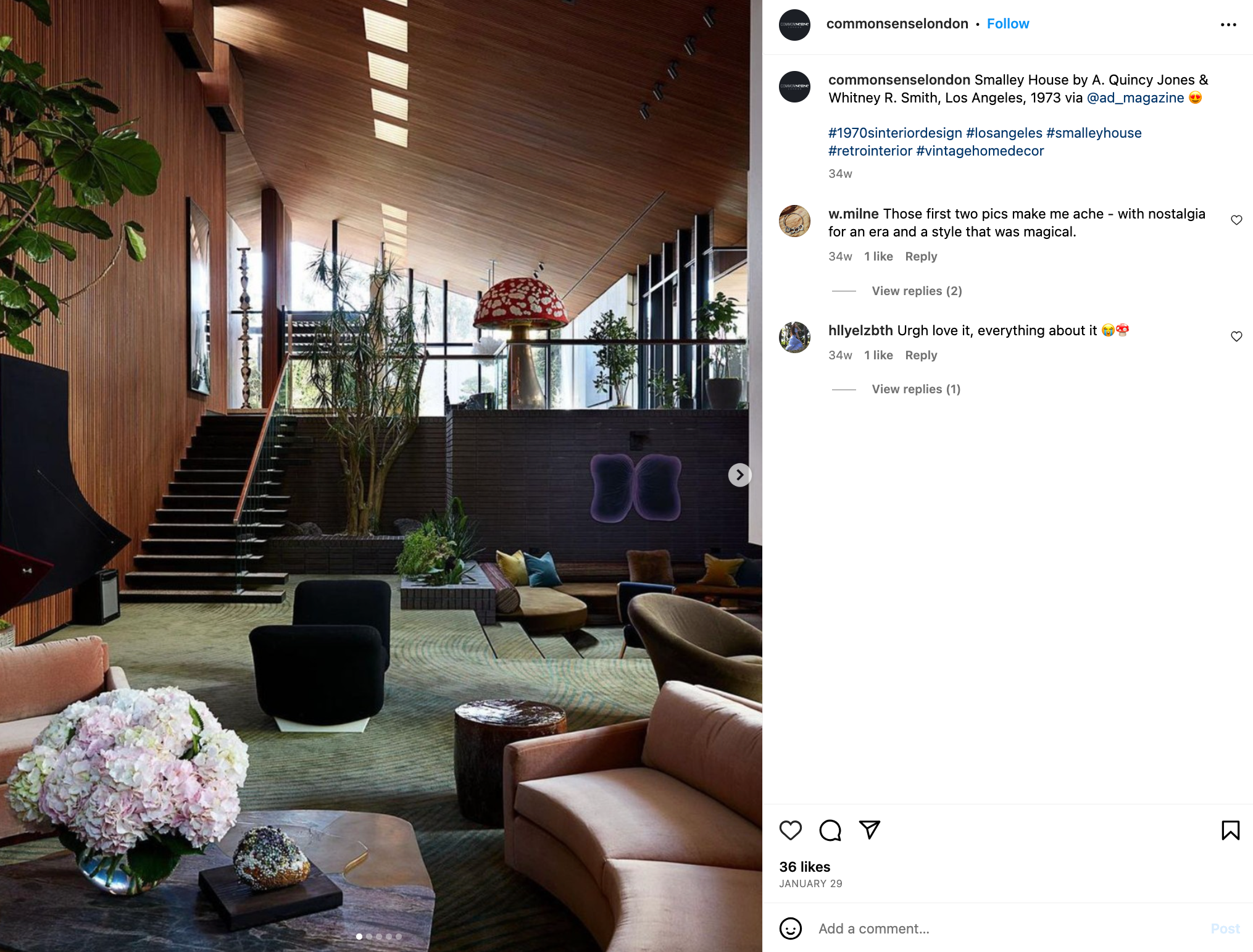

The 1970s favored organic and warm color schemes reminiscent of mid-century modern interiors. Avocado green, harvest gold, burnt orange, and earthen brown were popular choices for walls, upholstery, and decor. These earthy tones were often used in combination.
Bold Patterns
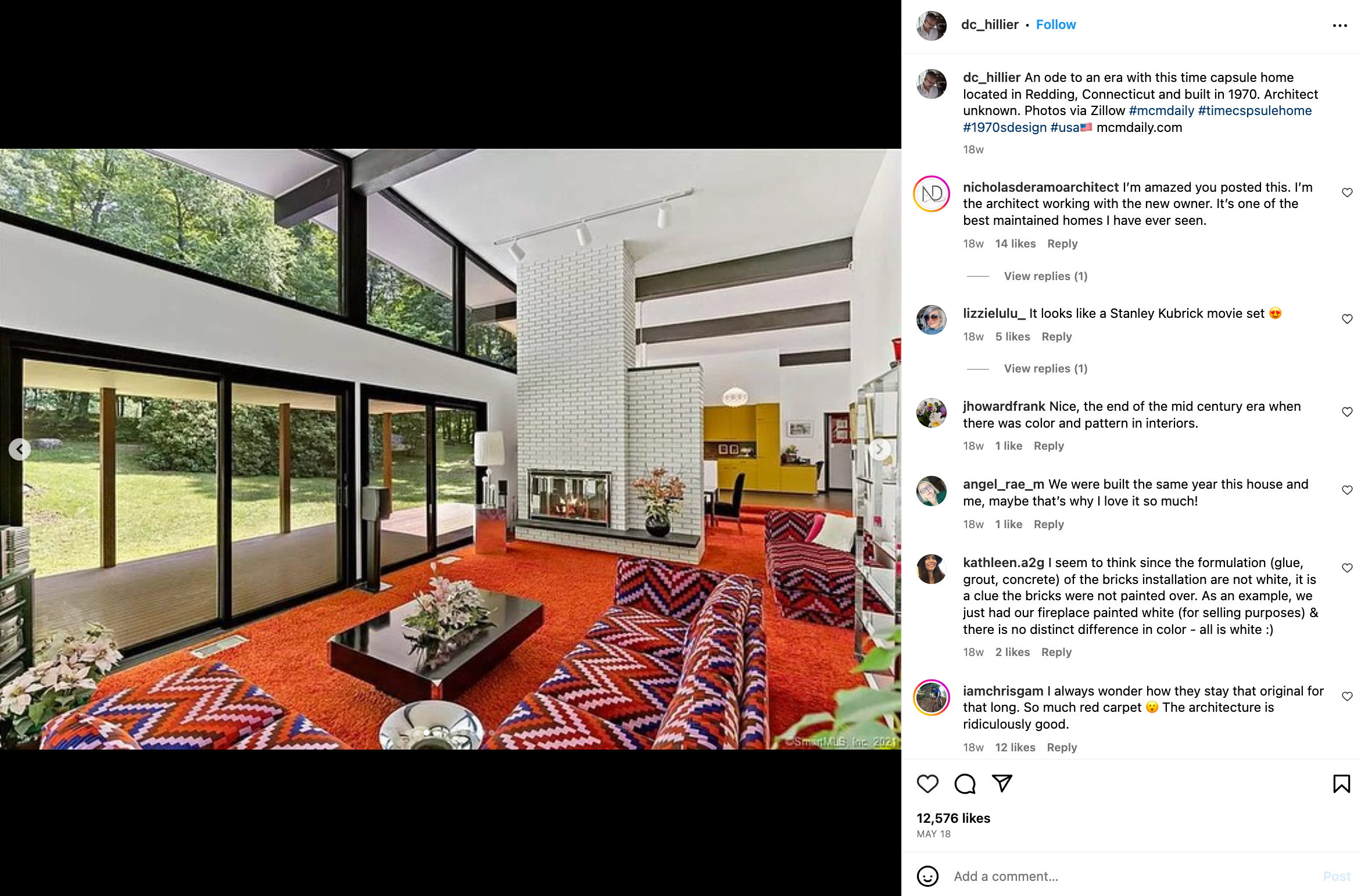

Bold and large-scale patterns were a significant part of 1970s design. Depending on the homeowner and the interior designer, paisley, floral prints, geometric shapes, and psychedelic patterns adorned textiles, wallpaper, and upholstery.
The psychedelic movement of the 1960s continued into the early 1970s—leading to the use of psychedelic patterns characterized by swirling, hypnotic designs with bright, contrasting colors. Optical art—or Op Art—added to this trend. It was characterized by optical illusions and visual tricks. Op Art patterns—often black and white—created the illusion of movement and depth.
Fuel your creative fire & be a part of a supportive community that values how you love to live.
subscribe to our newsletter
On the opposite end of the spectrum, floral patterns and animal prints abounded. Large, oversized floral prints were popular in the 1970s. These prints featured big, colorful flowers with intricate detailing. They were often used for upholstery, curtains, and wallpaper. Nostalgia for earlier eras led to the use of retro and vintage-inspired floral patterns—often featuring motifs from the 1920s, 1930s, or 1950s.
Animal prints like leopard and zebra were also incorporated into interior design during the 1970s—typically used for textiles and upholstery.
Natural Materials and Textured Surfaces
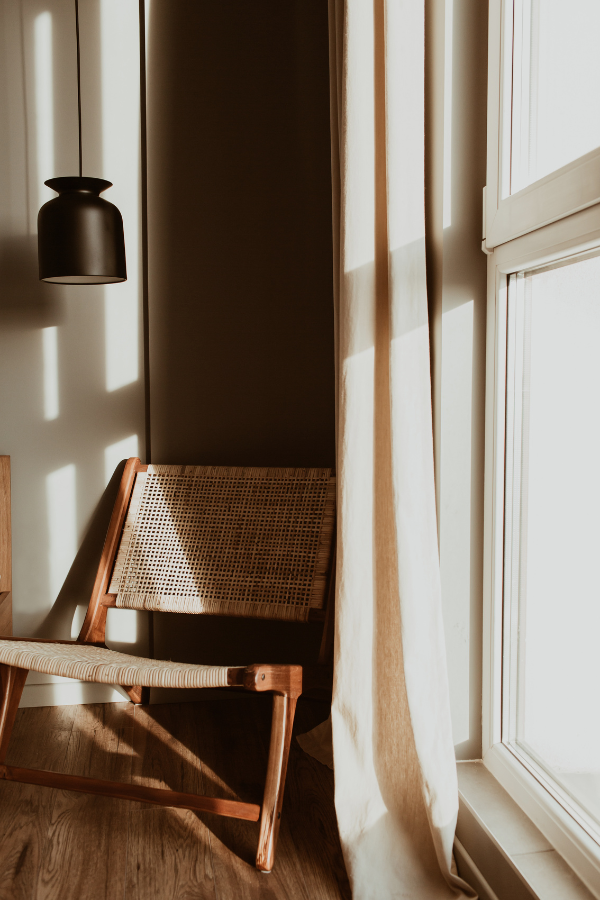

There was also a strong emphasis on organic materials—including natural wood, stone, and brick. Exposed wooden beams, wood paneling, and shaggy rugs were common elements in homes during this decade. Rattan furniture, macramé details, and more could be found from room to room.
Texture also played a primary role in 1970s design. Velvet textures, three-dimensional wallpaper, and woven wall hangings added depth and visual interest to interiors.
Pop Art and Kitsch
As the 1970s came to a close, pop art and kitsch elements found their way into home decor. Kitsch refers to art or decor that is considered gaudy, sentimental, or “in bad taste” by traditional standards. Kitschy items like ceramic figurines, decorative plates, and retro knick-knacks were commonly displayed in 1970s interiors. These items often featured whimsical or nostalgic motifs.
Bold, colorful artwork and quirky, often humorous decor items were popular choices. Pop art and kitsch allowed homeowners to express their personalities and interests through their interior decor. These elements encouraged a sense of individualism and creativity in middle-class homes that were somewhat uniform during the 1940s and ’50s.
Space Age and Futuristic Influences
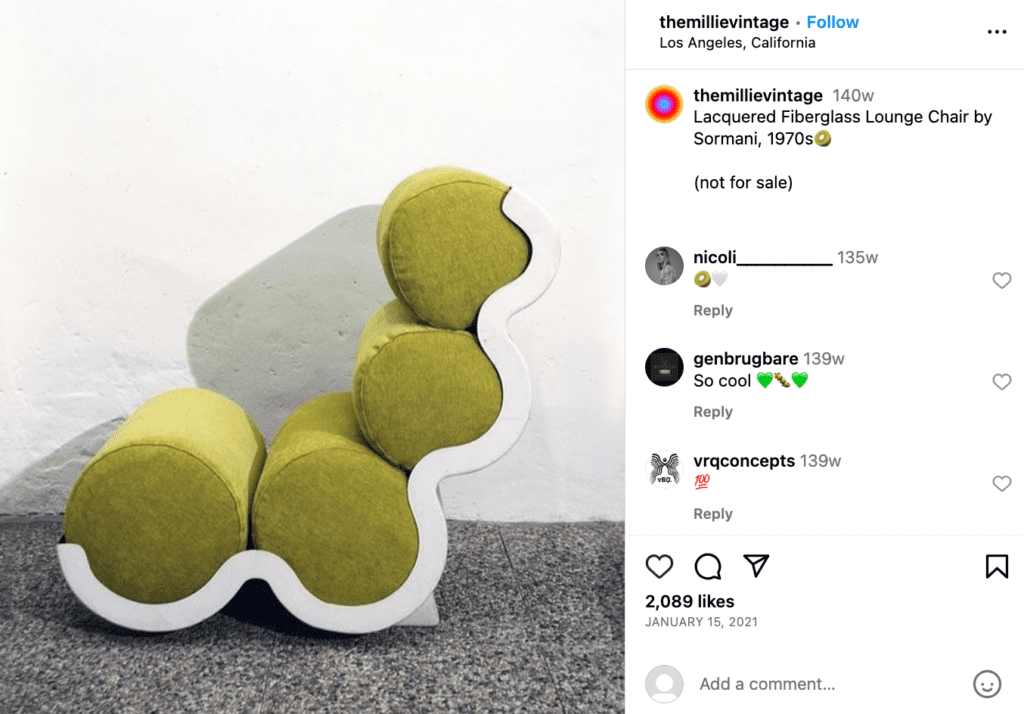

The space race and interest in futuristic design during this period inspired elements like molded plastic furniture, bubble chairs, and sleek, space-age lighting fixtures. The “Space Age” refers to a cultural and design movement that emerged in the mid-20th century—particularly during the 1950s and 1960s, and extended into the 1970s. It was characterized by the fascination with space exploration, scientific advancements, and the possibilities of a futuristic, spacefaring society.
Space Age design often featured sleek, curvilinear forms and unconventional shapes resembling spacecraft and other futuristic vehicles. Furniture, lighting, and architectural elements adopted these forms. Designers used innovative materials like fiberglass, chrome, and stainless steel to create furniture and decor that had a modern and futuristic appearance.
accepting new mastermind applications
For Fall ’24
Get unstuck. Find fulfillment. Rediscover your passion for the design industry we all love! Be one of the first to join our next exclusive, curated cohort of creative women and find support like you’ve never had before.


Mirrored and highly reflective surfaces were commonly used in Space Age design to create a sense of space and to mimic the look of spacecraft interiors. Mirrored furniture, accent walls, and decor items were popular. Sputnik chandeliers—named after the Soviet satellite—featured a burst of metal rods and light bulbs that radiated from a central sphere. They became an iconic symbol of Space Age design.
Transparent or semi-transparent furniture made from materials like acrylic (Lucite) was fashionable. These pieces appeared to be weightless and added a sense of transparency and lightness to interiors. The iconic bubble chair—often made of clear acrylic and resembling a futuristic bubble or cocoon—became synonymous with Space Age design.
Low Slung Furniture


Low-profile furniture with clean lines was equally prevalent. Sunken living rooms and platform beds were popular design choices. Combining sleek silhouettes with cozy comfort, several iconic pieces from the mid-century carried over to 1970s interiors. These include Eero Saarinen’s Womb Chair and the Eames Lounge Chair.
Conversation Pits
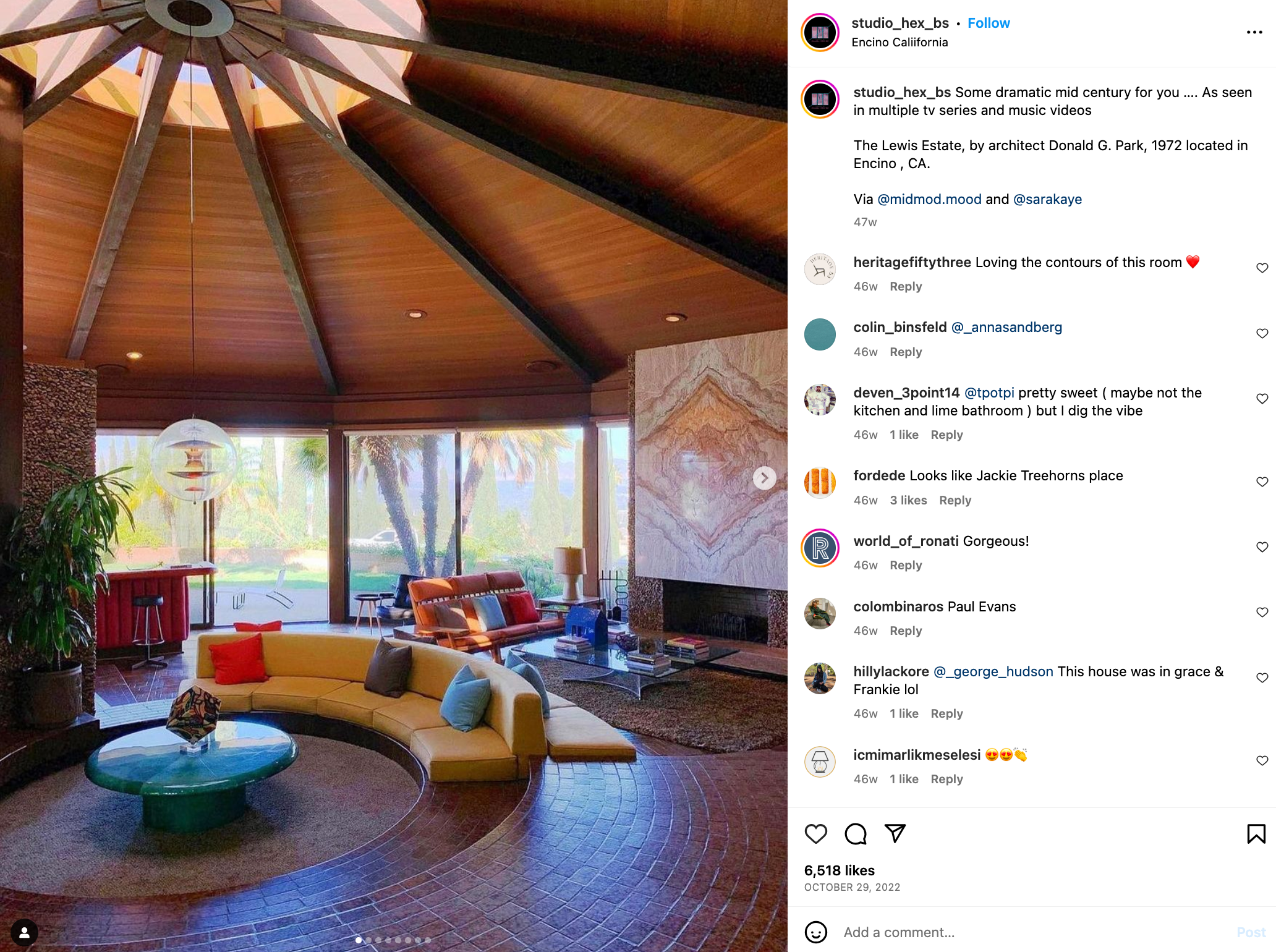

The 1970s were a time of increased emphasis on social interaction and communal living. Sunken seating areas, often referred to as conversation pits, were a trendy design feature that played into this evolving definition of “home.”
Conversation pits facilitated face-to-face conversations and gatherings—creating an intimate, laid-back atmosphere for friends and family to connect. They were typically surrounded by built-in seating and often had shag carpeting.
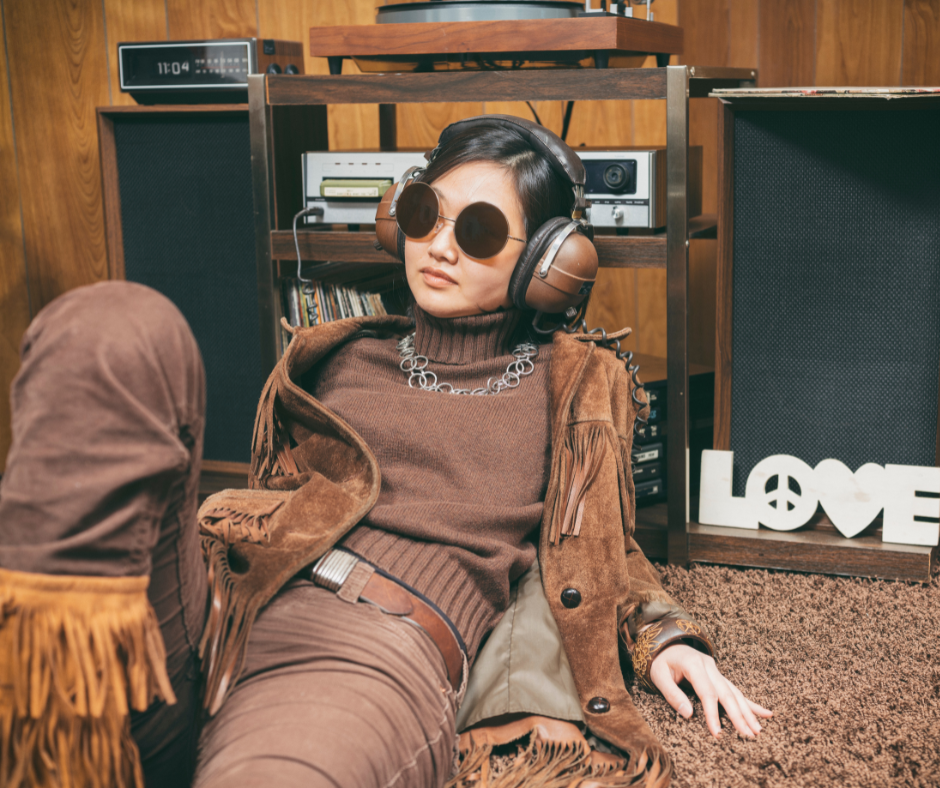

Conversation pits aligned with the bohemian and hippie aesthetic—which favored unconventional and non-conformist living spaces. Even architects and designers unaffiliated with those aesthetics were exploring new and unconventional architectural forms, so they also added a conversation pit or two!
Biophilic Design Elements


During the 1970s, Americans became increasingly interested in environmentalism and preserving their connection to nature. As Denise Chow writes in this article for NBC News, this decade was “a legislative heyday for environmentalists.” The 1970s saw “creation of the Environmental Protection Agency in 1970, passage of the Clean Air Act in 1970, the Clean Water Act in 1972 and the Endangered Species Act in 1973.”
Although the term “biophilic design” was not widely used in the 1970s, the concept of incorporating elements of nature into interior spaces aligns with its principles.
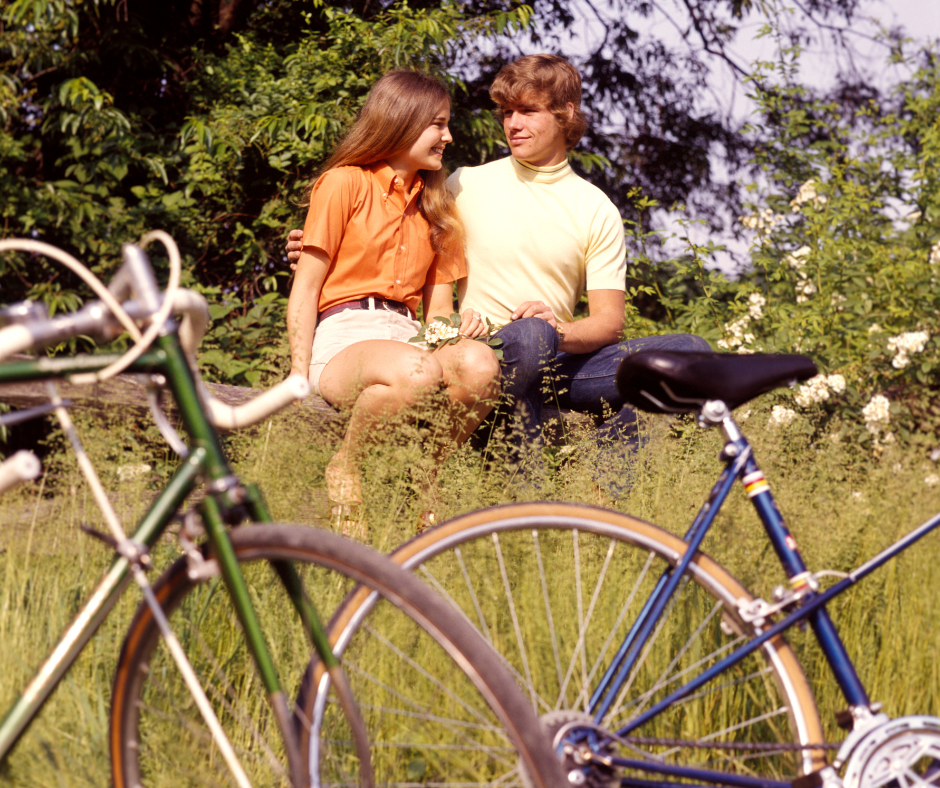

As a response to urbanization and the desire to reconnect with the natural world, indoor plants and organic materials became a way to bring a touch of nature into the home. Macramé wall hangings, plant hangers, and hanging plants were all popular decorative elements.
Some homeowners and designers in the 1970s were also influenced by Eastern design philosophies like Feng Shui—which emphasized the importance of balance and the flow of energy in interior spaces. Indoor plants were often seen as tools for achieving this balance in one’s interior living space.
Avocado-Colored Kitchen Appliances
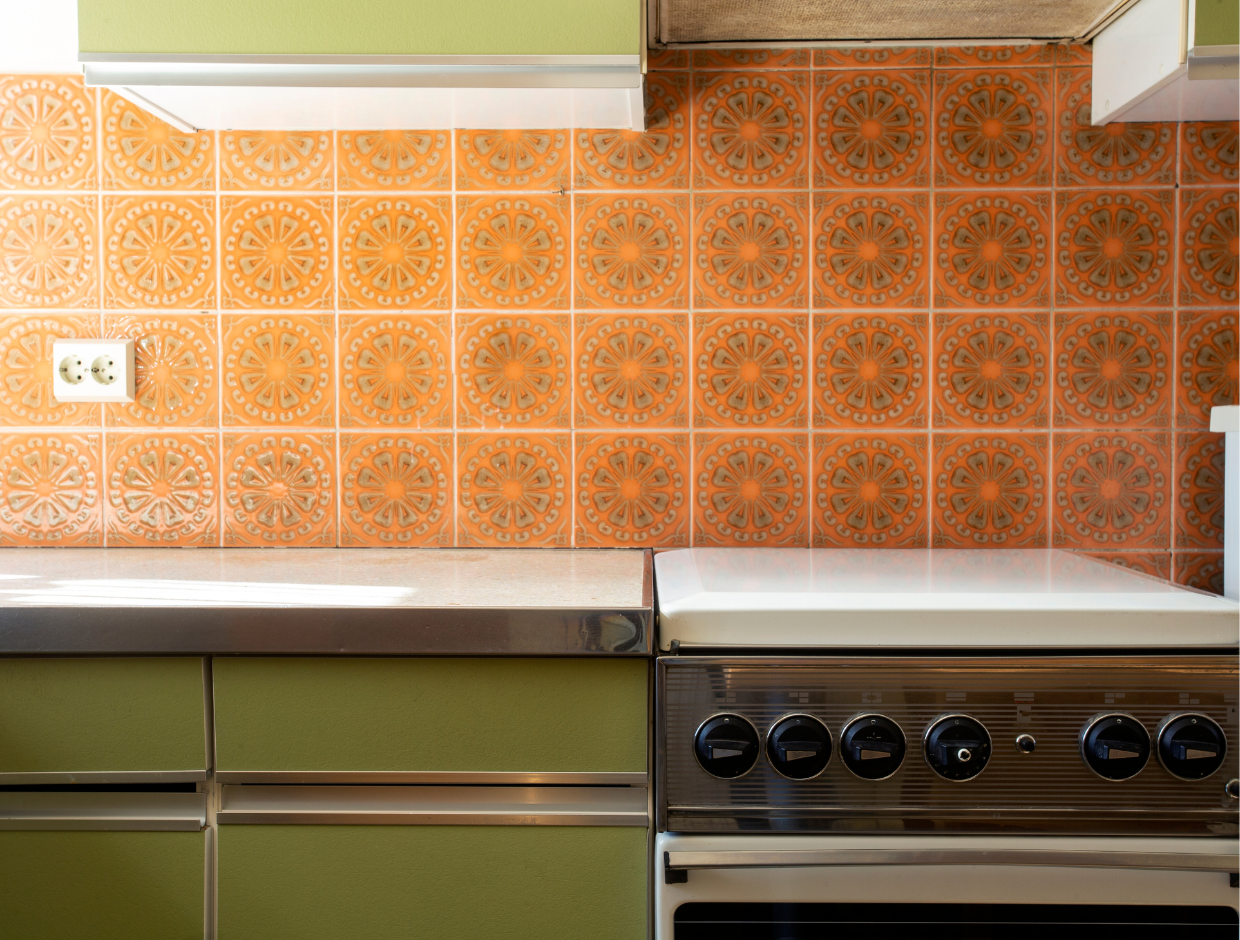

In the 1970s, the kitchen became a focal point of the home—not just for cooking but also for socializing and entertaining. Kitchen appliances in shades of avocado green were a quintessential 1970s design choice.
These included refrigerators, stoves, and even small appliances like toasters and mixers. Appliance manufacturers actively promoted avocado and other pastel colors with exhaustive marketing campaigns. This trendy color extended into clothing and other consumer goods for sale at the time.
Playful Postmodernism
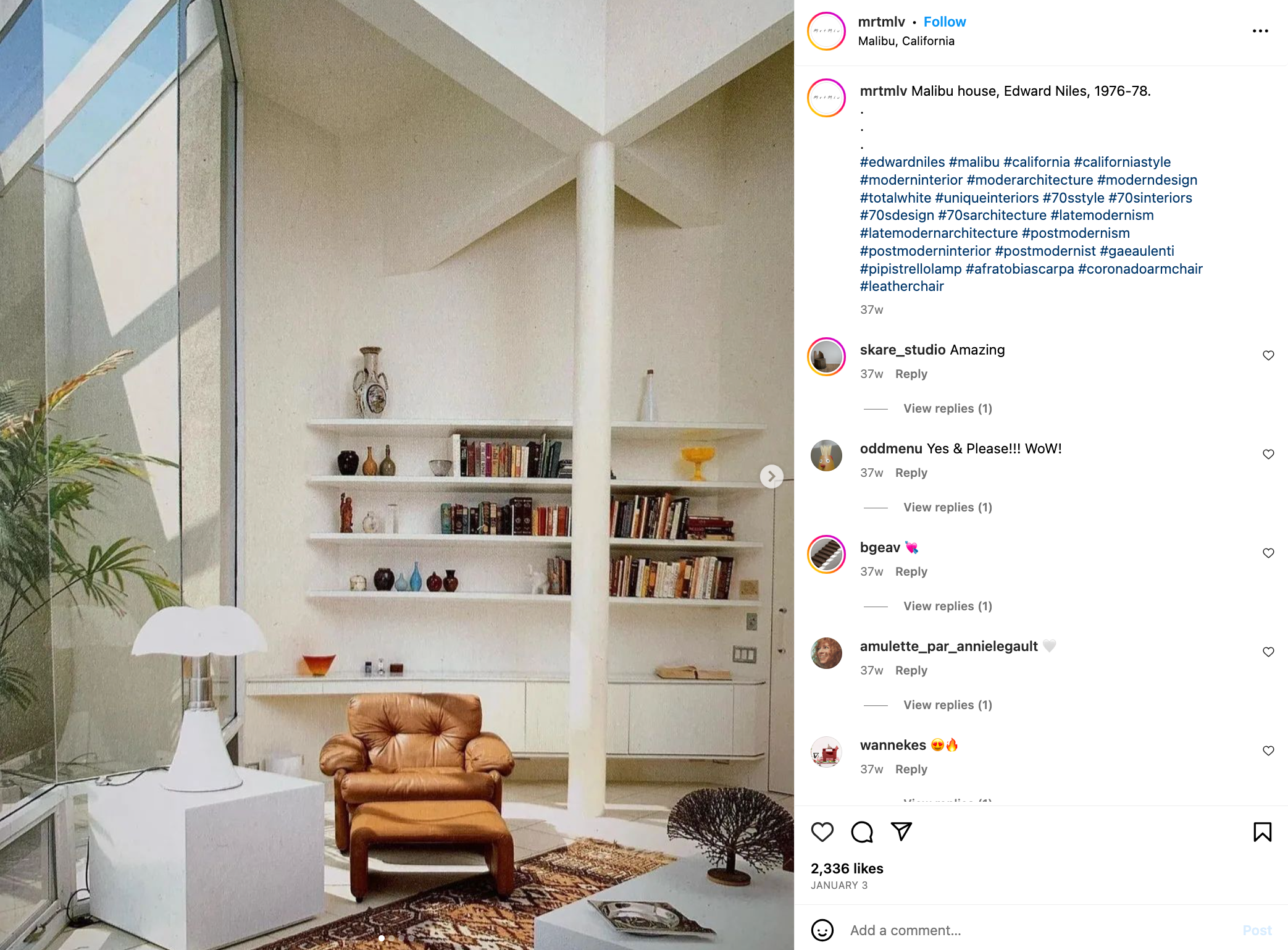

Toward the end of the 1970s, postmodernism emerged as a design movement. It often involved eclectic combinations of historical and contemporary styles, bold colors, and unconventional shapes.
Postmodern interior design and architecture championed irony as it dragged traditional Baroque, Rococo, Art Deco, and Classical styles. To do so, postmodern architecture and interior design often featured whimsical and unconventional building shapes—i.e., the use of decorative columns, arches, and pediments.
Interior designers from this period also blurred the lines between highbrow and lowbrow culture. Postmodernist interiors could incorporate both luxurious and utilitarian elements in the same space. Learn more about the return of postmodern design here.
Iconic Pieces from the 1970s


Interested in reviving 1970s design in your own home—or those of your clients? An easy way to recall the innovation, playfulness, and warmth of this decade without creating waste is by sourcing vintage pieces from the period.
Iconic pieces from the 1970s include mushroom lamps, cantilever rattan dining chairs, and cushioned sofas like this design by Milo Baughman. Space Age sideboards and light fixtures like these from 1stDibs add a bit of futurism to your living room or dining room.
Share your modern take on 1970s design in the comments below.









